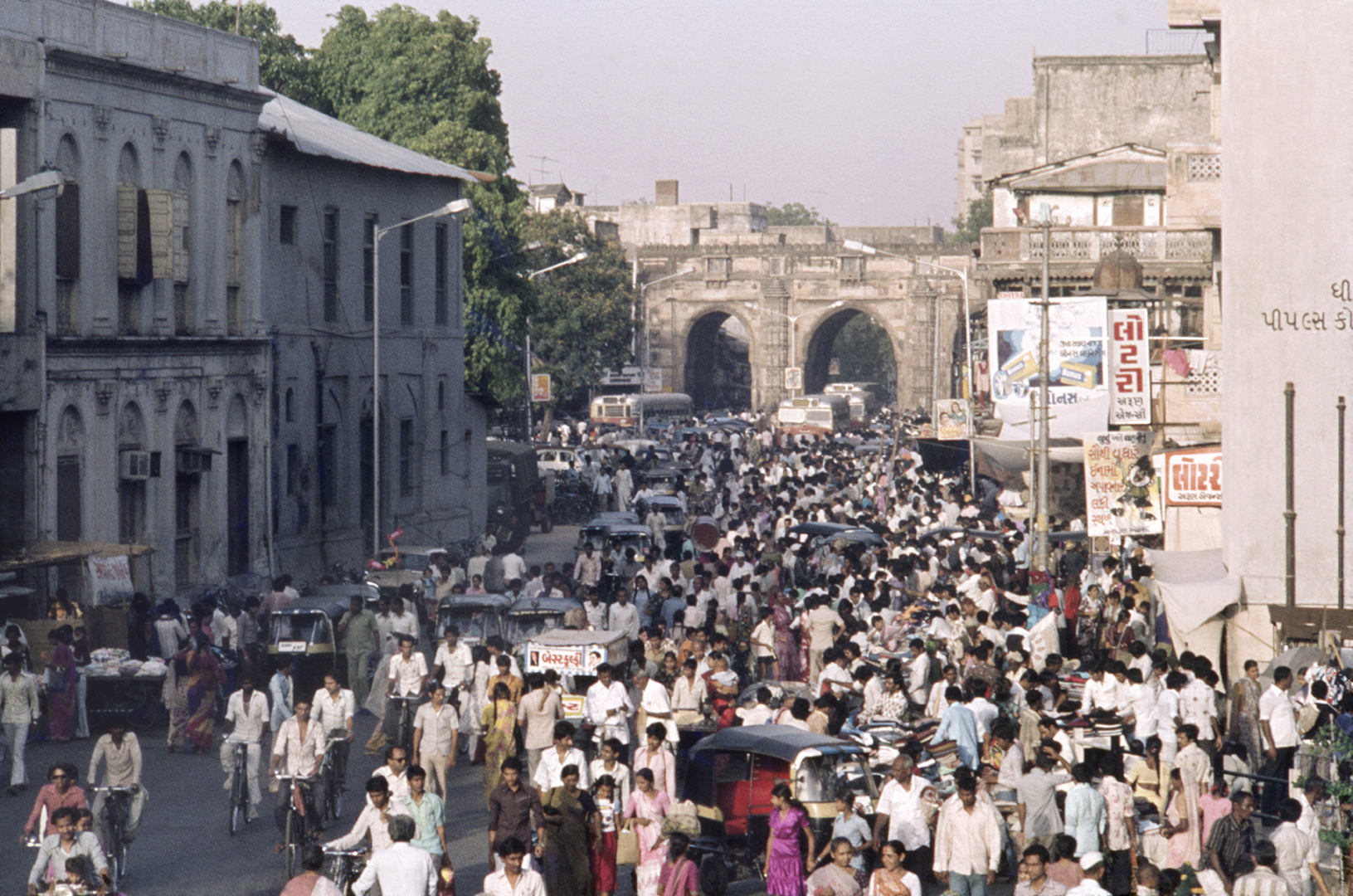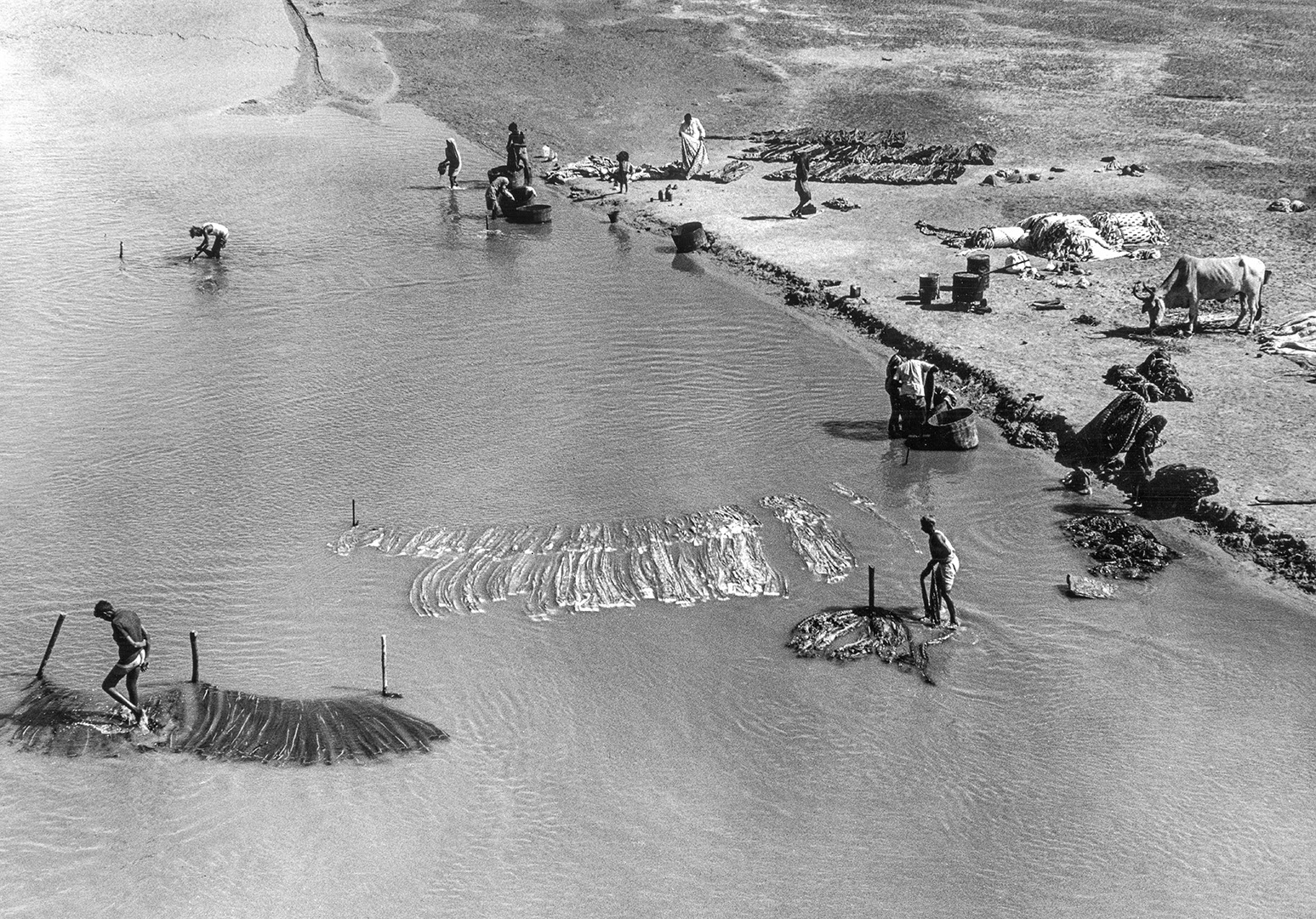River in the City
The Sabarmati River has always been the lifeline for the people of Ahmedabad ever since the inception of the city. When Ahmed Shah decided to build his capital on the banks of the Sabarmati in 1411, he chose the eastern bank of the river. With the growing population and industrialization in later centuries, the city grew on both eastern and western banks. The riverbed functioned as the city centre, which was used for various purposes such as livelihood, commercial intent, social gathering, entertainment and religious purposes. This photo-story walks you through the changing roles of the Sabarmati in the lives of the people of Ahmedabad.
Ahmedabad, Gujarat
Zafar Khan established the independent Gujarat Sultanate in 1407. His grandson Ahmed Shah laid the foundation of a new capital Ahmedabad on the eastern bank of river Sabarmati. Since then, the river has been an integral part of the lives of the people of Ahmedabad. Over the years, the city expanded on both the eastern and western banks of the river. The city of Ahmedabad has witnessed and experienced five major dynasties, first being the Gujarat Sultanate from 1411 to 1573 and then the Mughals from 1573 to 1753. The city came under Maratha rule, subsequently from 1753 to 1817. It passed to British hands in 1817 and was ruled by them till the independence of India in 1947.

The Teen Darwaza or Triple Gate. Photographer: Colonel Biggs | Year: 1866
Medium: Large Format Analog | Source: Page retrieved from Digitized copy of the Book ‘Architecture at Ahmedabad: The capital of Gujarat’

Market and street at the Teen Darwaza in the old city of Ahmedabad.
Photographer: Dashrath Patel | Year: circa 1960
Medium: 35 mm color slide | Source: NID Archives

The dry riverbed of Sabarmati. Ellis Bridge and Patang Hotel can be seen in the background.
Photographer: Sanjiv Shah | Year: circa 1990
Medium: 35 mm Analog | Source: Photographer
The flowing waters of the river helped wash the excess dye from freshly dyed textiles and block printed fabrics. The dry sand-bed of the river was ideal for drying and bleaching undyed clothes in preparation for block printing.

Dry bed of Sabarmati used for drying clothes.
Photographer: F. N. Pathan | Year: circa 1970
Medium: 35 mm Analog | Source: NID Archives
As the textile industry was blooming in Ahmedabad, local communities such as the Vagharis, residing along the river practiced the unique art of textile painting known as 'Mata ni Pachedi' and block-printing for their livelihoods. In this process, intricate drawings of the Mother Goddess are made on cloth which is then used in worshipping the Goddess. The process involves washing the hand-painted textile in the flowing Sabarmati river. According to history, people of this community started practicing this art when the community was denied access to the temples, and, therefore, they began worshipping the Mother Goddess which they had painted on a piece of cloth. Today, there is just one family (Chitara family) from this community who is still practicing this art as their source of livelihood.

The Washermen community (Dhobis) washing clothes in the flowing water of the Sabarmati.
Photographer: Pushpa Chavda | Year: 1975
Medium: 120 mm Analog | Source: NID Archives

Treating and washing printed textiles in the Sabarmati River. Tagore Hall is seen in the background.
Photographer: Rajesh Vora | Year: 1995, February
Medium: 35 mm Analog | Source: Photographer

Local artisans treating the hand painted ‘Mata ni Pachedi’ clothes in the river.
Photographer: Dashrath Patel | Year: circa 1960
Medium: 35 mm color slide | Source: NID Archives

Donkeys carrying the sand from the riverbed and crossing the River Sabarmati.
Photographer: Samir Pathak | Year: 1988, August
Medium: 35 mm Analog | Source: Photographer
During the dry season, the riverbed was used for farming as well. Families living along the river, grew melons and pumpkins in the riverbed.

The dry riverbed of Sabarmati served as land for agriculture.
Photographer: possibly F.N. Pathan | Year: circa 1970
Medium: 35 mm Analog | Source: NID Archives
Gujri Bazaar (Sunday Market) has been held in Ahmedabad since the city's inception in 1414. Earlier it was held on Fridays near Teen Darwaza and was called Shukarvari Bazaar. Later it shifted to various places. In 1954, it was relocated to the Sabarmati riverbed under the Ellis Bridge. After establishing the Riverfront in 2014, the market was moved to a new place (near Raikhad gate) not far from Ellis Bridge.

Sunday Market on the Eastern bank of Sabarmati.
Photographer: unknown | Year: 1980 | Medium: 120 mm Analog
Source: Photographic prints provided by Gujri Bazaar Association
The riverbed also functioned as an open ground for organizing various religious festivals, fairs and other events such as a Circus.

On Moharram, the Tajia procession is carried out for immersion in the Sabarmati.
Photographer: Vivek Desai | Year: circa 2000
Medium: 35 mm Analog | Source: Photographer

Idol of Lord Ganesha being immersed in the Sabarmati after the festival of Ganesh Chaturthi.
Photographer: Ajit Solanki | Year: 2010
Medium: 35 mm Digital SLR (Canon EOS 7D) | Source: Photographer

On the dry riverbed of the Sabarmati, a Circus used to be held for the people of Ahmedabad.
Photographer: Vivek Desai | Year: circa 2000
Medium: 35 mm Analog | Source: Photographer
In recent times (2010 onwards), the banks of the Sabarmati have been straightened to a uniform width of 263 metres once it enters Ahmedabad city, as part of the Sabarmati Riverfront Development Project.

Construction site at the Sabarmati Riverfront.
Photographer: Bindi Sheth | Year: 2009, July
Medium: 35 mm Digital SLR (NIKON D300) | Source: Photographer

West Wall
Photographer: Robert Stephens | Year: 2016, October
Medium: Digital Camera | Source: Photographer

People of Ahmedabad city enjoying a bicycle ride on the lower promenade of the Sabarmati Riverfront.
Photographer: Raj Maurya | Year: 2020, January 14
Medium: 35 mm Digital SLR(Canon EOS 6D) | Source: Photographer
About the project :
The principal intent behind this project is to unravel the history of the Sabarmati River through photography-archives collected from various sources, to inform, and infuse introspection amongst the city’s inhabitant’s, policymakers and a broader audience on its importance in the state of Gujarat.
Raj Maurya a Photography Design student at the National Institute of Design (NID) India's Gandhinagar campus worked on this project as his graduation project with guidance from Rajesh Vora (Photographer and NID Alumnus) and Rishi Singhal (Discipline Lead, Photography Design, NID Gandhinagar). This project was supported by Living Waters Museum and Murthy Nayak Foundation. (Published in 2022)
About Raj Maurya
Raj Maurya is a photographer, archivist, researcher and communication designer whose practice revolves around art, culture and heritage. He has a keen interest in the History and Cultural Heritage of the Indian sub-continent. He has done his Masters in Photography Design from the National Institute of Design and currently working as Cultural Mapping Fellow for the project 'Mera Gaanv Meri Dharohar' under National Mission on Cultural Mapping by the Ministry of Culture. (Published in 2022)
Suggested Stories

